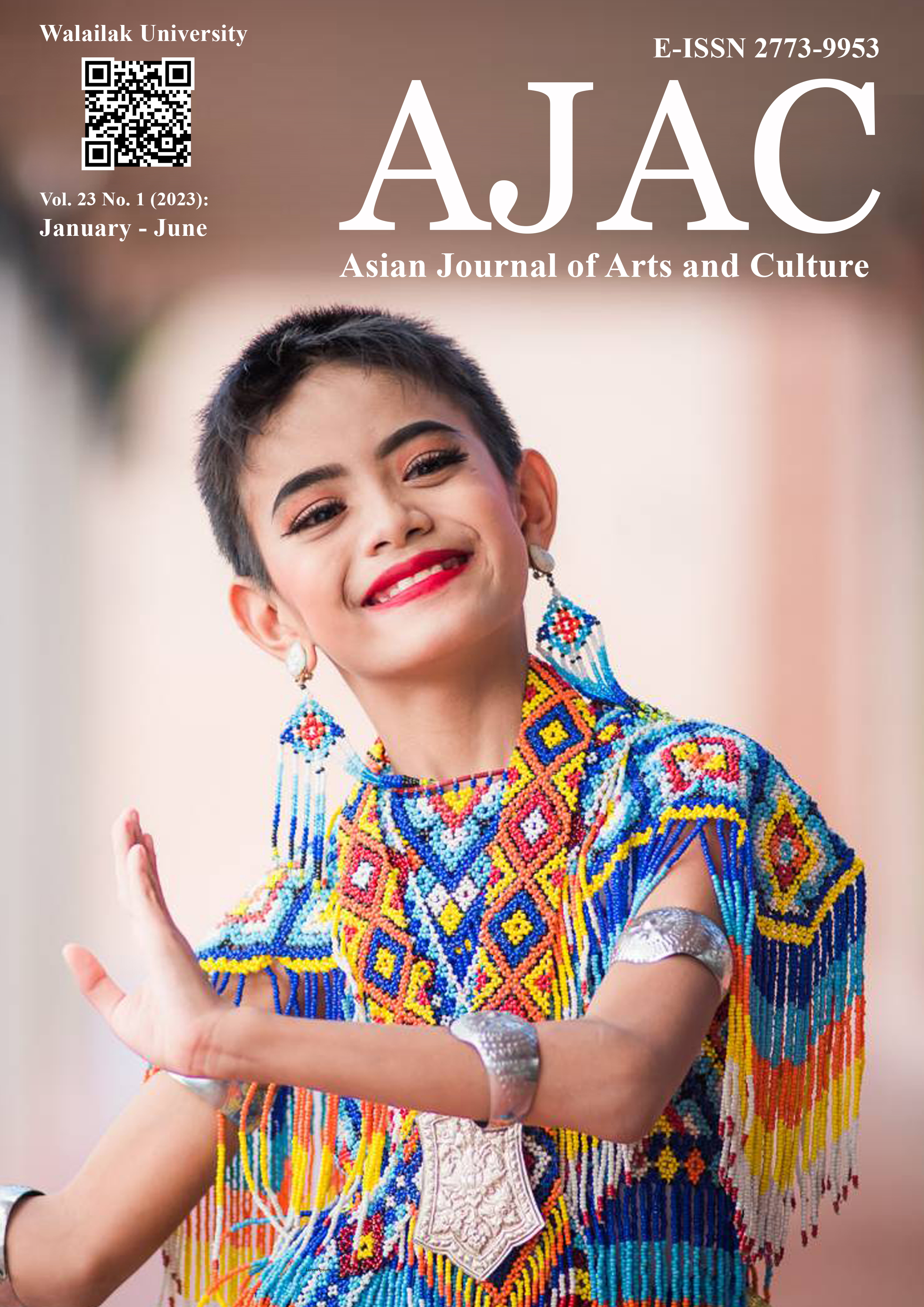New Dimension of Lacquered Work
Main Article Content
Abstract
Thai artwork Kammalor patterns (Lacquered Work) are the national art of Thailand that indicate the prosperity of culture that shows Thai identity. Handicrafts in Thai art, therefore, represent a skill that is exquisite, delicate, and tactful. In the midst of the contemporary social trend, social changes in art are diverse in commercial art. There are modifications and developments of works of art. Making the art market, the addiction to commercial art has an alternative channel for people to consume art in a variety of ways and more freely.
The result of this creative research, researchers study and collect data. The knowledge from theory and practice in fine arts, surreal art creation, contemporary Thai painting style, analysis of techniques and creative processes from Thai techniques, a black and gold lacquered pattern technique and ancient lacquered patterns, including materials to create works that are even more difficult to find nowadays. The process combines techniques, processes and styles from Vietnamese lacquered works, such as techniques for inlaying materials onto works, using materials from fishbones, crab shells and shells together with mixing techniques on ceramic works from technique Raku firing (The Art of Raku Firing) using the Kintsugi fusion technique in the form of mixed media creations. The result of creating this work will show emotional aesthetics, a feeling that reflects imagination in creating works from inspiration in the fishery profession and the concept that the researcher does not rely on surreal art, which emphasizes the transfer of stories through creativity, symbolic shape display, and artistic visual elements that modified new attitudes through conservative Thai art forms to reflect the image of Thai art in the "New Dimension of Kammalor" series for society in the 21st century to remain sustainable in the future.
Article Details

This work is licensed under a Creative Commons Attribution-NonCommercial-NoDerivatives 4.0 International License.
© 2018 by Asian Journal of Arts and Culture, Walailak University. All rights reserved.
References
Accession to the Throne. (2006). Jataka Buddha's history from a Rod Nam pattern cabinet. Bangkok, Thailand: Krungsilp Printing.
Adulyaphichet, A. (2012). Ancient Lacquer Art. Bangkok, Thailand: Mueang Boran Publishing House.
Chokkerd, P. (2019). “Kintsugi” learns how to pull yourself from failure to success in Japanese style.
Retrieved from https://brandinside.asia/how-to-heal-yourself-from-failure-to-success-by-kintsugi- principle/.
Creswell Bell, A. (2017). Clay Contemporary Ceramic Artisans.London, United Kingdom: Thames & Hudson Ltd.
International Center for the Promotion of Arts and Crafts (Public Organization). (2007). Chang Sip Mu. Bangkok, Thailand: P. Press Co., Ltd., Foreword.
Jongchitphotham, S. (2011). Elements of art. Bangkok, Thailand: Wadsilp Co., Ltd.
Nimsamer, C. (1998). Art elements. (9th time). Bangkok, Thailand: Amarin Publishing House.
OKnation. (2007). Love…“unreal” things that are not true, things that are not true. Retrieved from http://oknation.nationtv.tv/blog/phaen/2007/08/28/entry-2
Phahukan, S. (2019). Ancient Lacquer Art to Contemporary Thai Painting: An Analytical Case Study. Created from contemporary Thai lacquer painting works. Journal of Fine and Applied Arts Academic, research and creative works, 6(2), 4.
Rattana, S. (2006). Art style pattern. Bangkok: Sipprapha Publishing House.
Sangsana, S. (2021). Kintsugi. Idea used without gold. Retrieved from https://goterrestrial.com/2021/11/10/kintsugi-idea/.
Sarakadee Lite. (2022). Sarakadee Lite After the 18th century, more than 900 pieces. Retrieved from https://www.sarakadeelite.com/arts_and_culture/praphat-phiphithaphan/.
Somprasong, J. (2001). Techniques for creating lacquer art (new era). Bangkok, Thailand: Odeon Store.
Supakorn, W. (2018). The artist of the rock. Retrieved. Retrieved from https://www.bangkokbiznews.com/lifestyle/648)
Tansriprapasiri, S. (2005). Raku wares Ware The most desired of the tea ceremony. Retrieved from http://www.thaiceramicsociety.or.th/pdf/Article/6.pdf.
WeXpats. (2021). Kintsugi, Japanese art of beauty in imperfections. Retrieved from https://we-
xpats.com/th/guide/as/jp/detail/8659/.0


